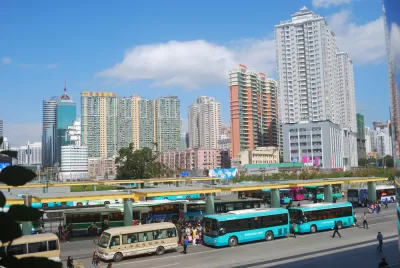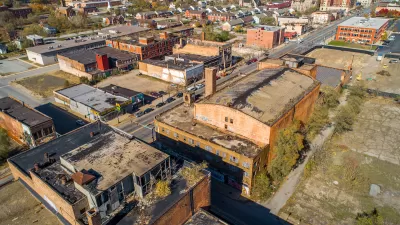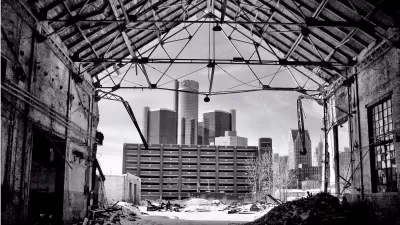More than 900 Chinese cities are continuing to plan for growth even as their populations shrink.

Nearly one-third of Chinese cities are losing population—more than anywhere else in the world, according to a new study from Tsinghua University. That finding, obtained by monitoring nighttime lights in more than 3,300 cities over three years, conflicts with official data anticipating urban growth throughout the country.
"The Chinese cities under the greatest pressure of shrinking include those heavily dependent on natural resources, such as the coal mining town of Hegang in Heilongjiang province," Sidney Leng reports in South China Morning Post. Many are located in China's rust belt.
A review of 60 cities' urban development plans showed that many municipalities are still relying on "inflated" projections, leading them to undertake major infrastructure and development projects designed to accommodate population growth that is not likely to occur.
Researchers worry that this trend marks a recipe for urban decay, leading to empty high-rises and unused industrial developments. "Many landscapes in the US rust belt could be the future of some of China’s shrinking cities," one researcher told the Post.
FULL STORY: Almost one-third of Chinese cities are shrinking, but urban planners told to keep building

Planetizen Federal Action Tracker
A weekly monitor of how Trump’s orders and actions are impacting planners and planning in America.

Maui's Vacation Rental Debate Turns Ugly
Verbal attacks, misinformation campaigns and fistfights plague a high-stakes debate to convert thousands of vacation rentals into long-term housing.

Restaurant Patios Were a Pandemic Win — Why Were They so Hard to Keep?
Social distancing requirements and changes in travel patterns prompted cities to pilot new uses for street and sidewalk space. Then it got complicated.

In California Battle of Housing vs. Environment, Housing Just Won
A new state law significantly limits the power of CEQA, an environmental review law that served as a powerful tool for blocking new development.

Boulder Eliminates Parking Minimums Citywide
Officials estimate the cost of building a single underground parking space at up to $100,000.

Orange County, Florida Adopts Largest US “Sprawl Repair” Code
The ‘Orange Code’ seeks to rectify decades of sprawl-inducing, car-oriented development.
Urban Design for Planners 1: Software Tools
This six-course series explores essential urban design concepts using open source software and equips planners with the tools they need to participate fully in the urban design process.
Planning for Universal Design
Learn the tools for implementing Universal Design in planning regulations.
Heyer Gruel & Associates PA
JM Goldson LLC
Custer County Colorado
City of Camden Redevelopment Agency
City of Astoria
Transportation Research & Education Center (TREC) at Portland State University
Jefferson Parish Government
Camden Redevelopment Agency
City of Claremont





























